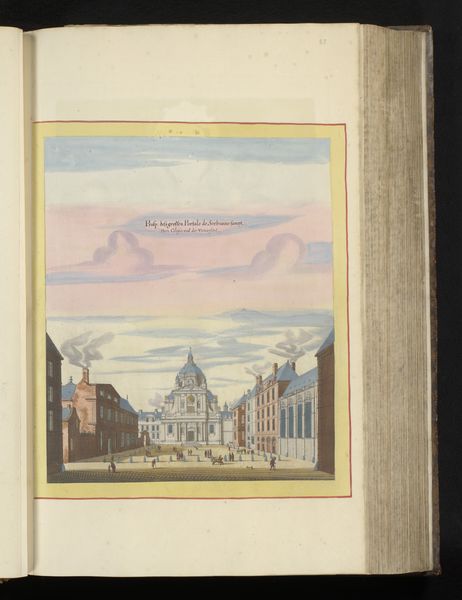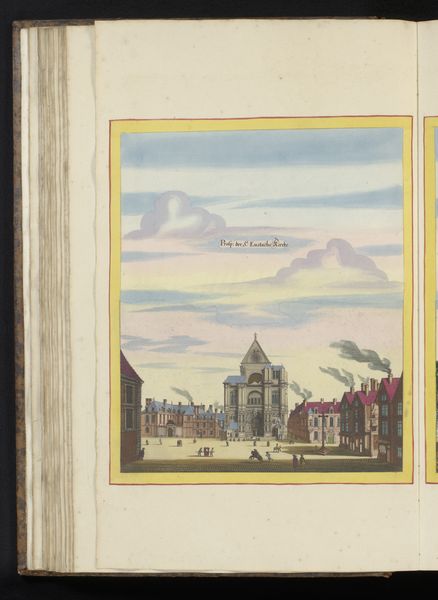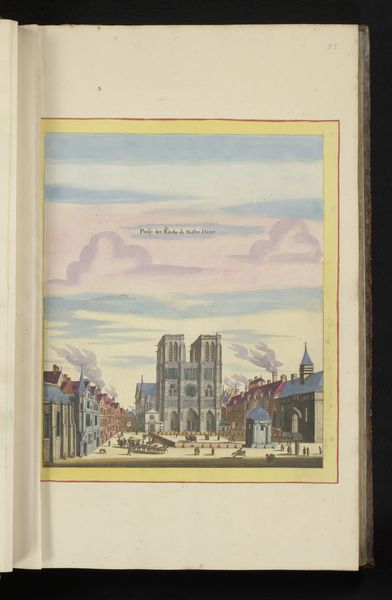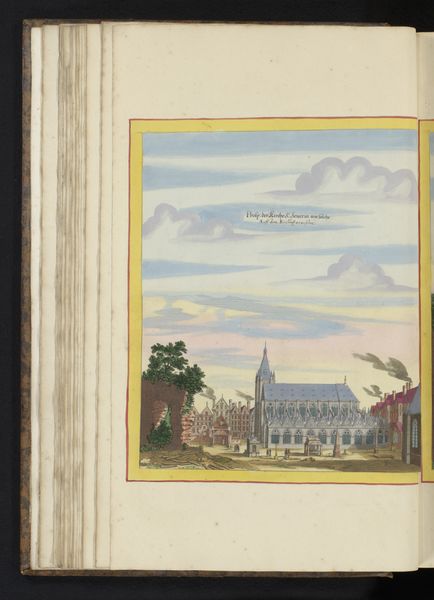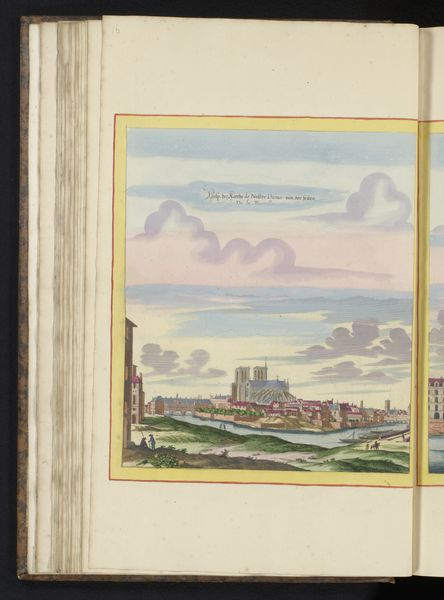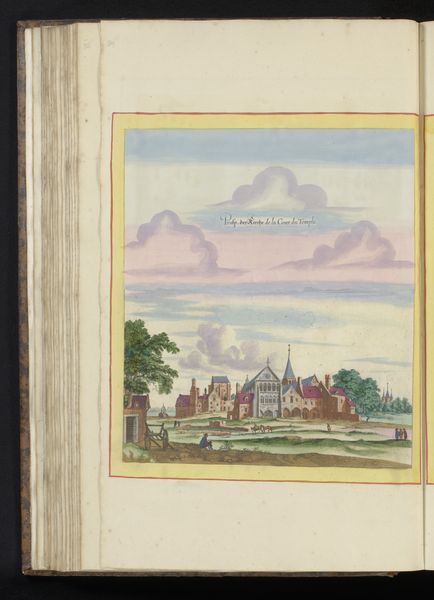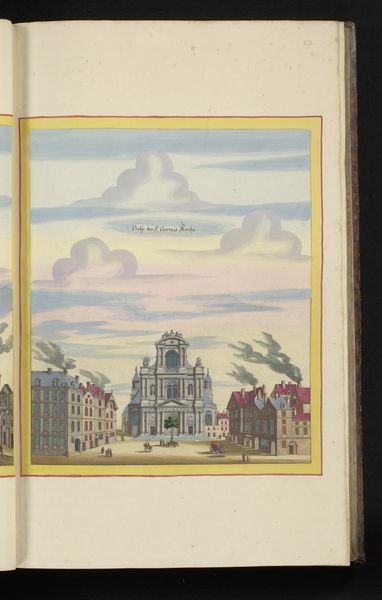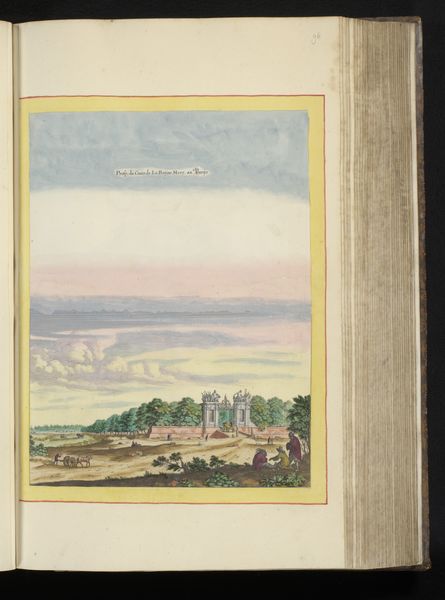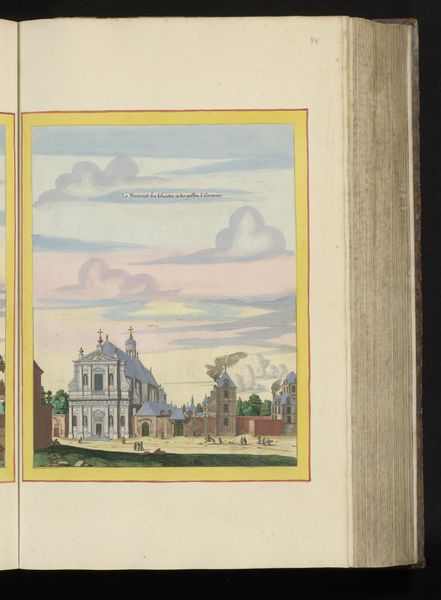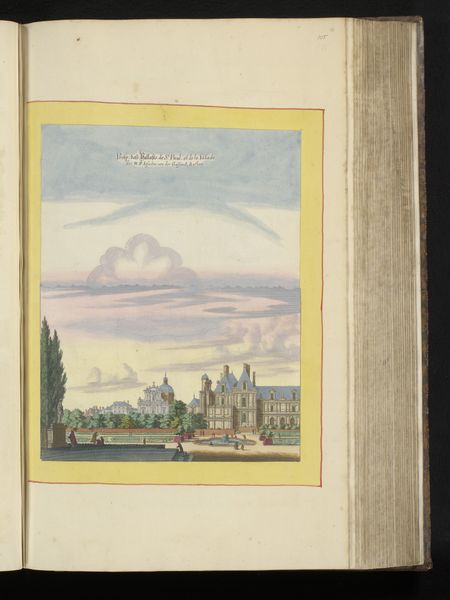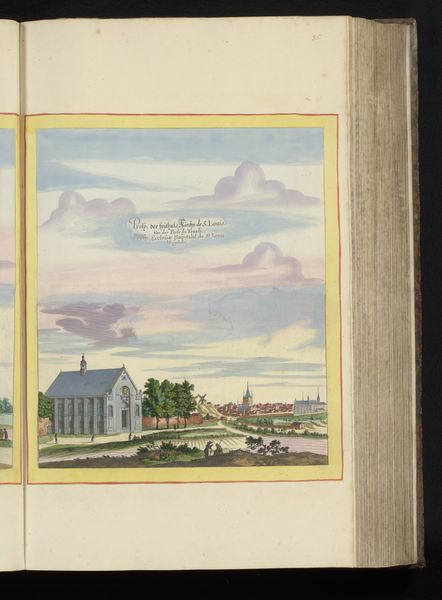
drawing, paper, ink
#
drawing
#
baroque
#
paper
#
ink
#
coloured pencil
#
cityscape
#
watercolor
Dimensions: height 377 mm, width 278 mm, height 536 mm, width 320 mm
Copyright: Rijks Museum: Open Domain
Editor: This is "Gezicht op de Bastille vanuit de Rue Saint-Antoine" or "View of the Bastille from the Rue Saint-Antoine" by Matthäus Merian, created in 1655, using ink and watercolor on paper. I’m really struck by the sort of detached feeling of this cityscape; it’s so meticulously rendered but almost devoid of life despite the figures present. What do you see in this piece? Curator: I see a potent commentary on power and the societal structures of 17th-century Paris. While seemingly a straightforward depiction, Merian's rendering subtly reveals the disparities embedded within the urban fabric. Note the imposing Bastille dominating the horizon, a stark reminder of the monarchy's absolute authority. Consider how the detailed rendering of the architecture contrasts with the generalized figures populating the street, reducing individuals to mere components within the larger framework of power. How does this resonate with later revolutions, where the Bastille became a focal point of revolt? Editor: That's a compelling reading. I hadn't considered the faceless figures in contrast to the hyper-detailed buildings. Curator: This wasn't merely a geographical record, but a subtle act of witnessing. By capturing the everyday life juxtaposed against the backdrop of the Bastille, Merian invites us to reflect on the intricate power dynamics at play. Are we meant to see this as an objective rendering, or a subversive observation? What are your thoughts? Editor: I suppose the ambiguity is the point. It's easy to overlook the power dynamics in an image that seems purely documentary. Curator: Exactly! And that's precisely where art history, through a socially conscious lens, can unveil these hidden layers. The “objective” eye is always mediated by culture, history, and often, subtle acts of resistance. Editor: Thanks, that gives me a lot to think about in terms of art's role in reflecting societal structures. Curator: And hopefully, the potential for art to be a catalyst for change, even centuries later.
Comments
No comments
Be the first to comment and join the conversation on the ultimate creative platform.
